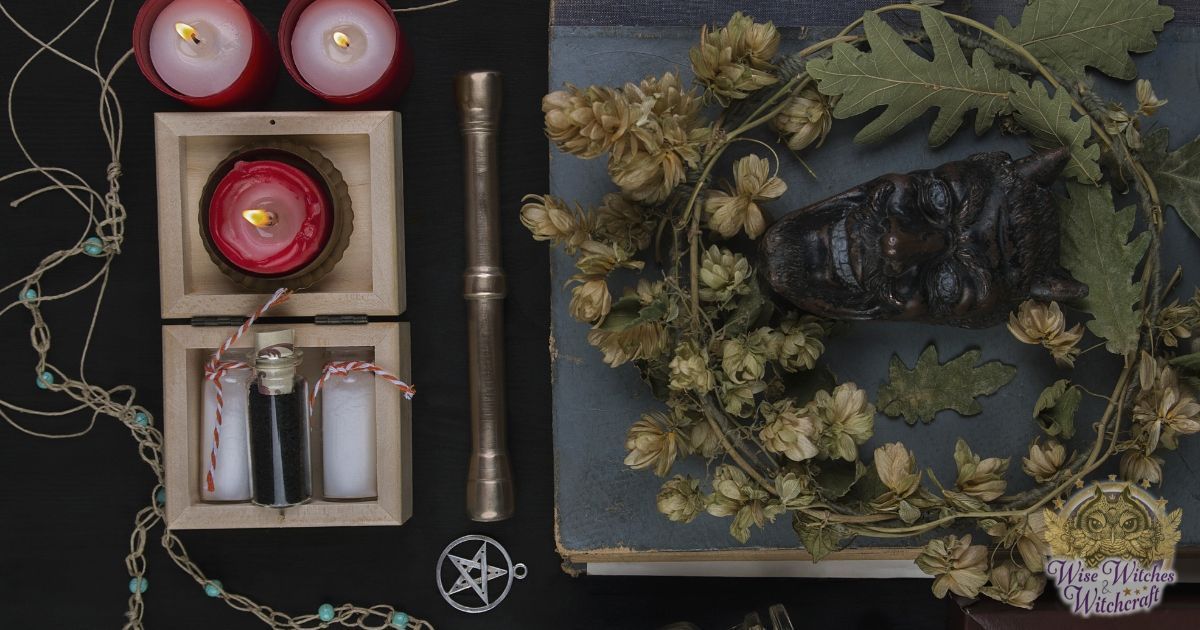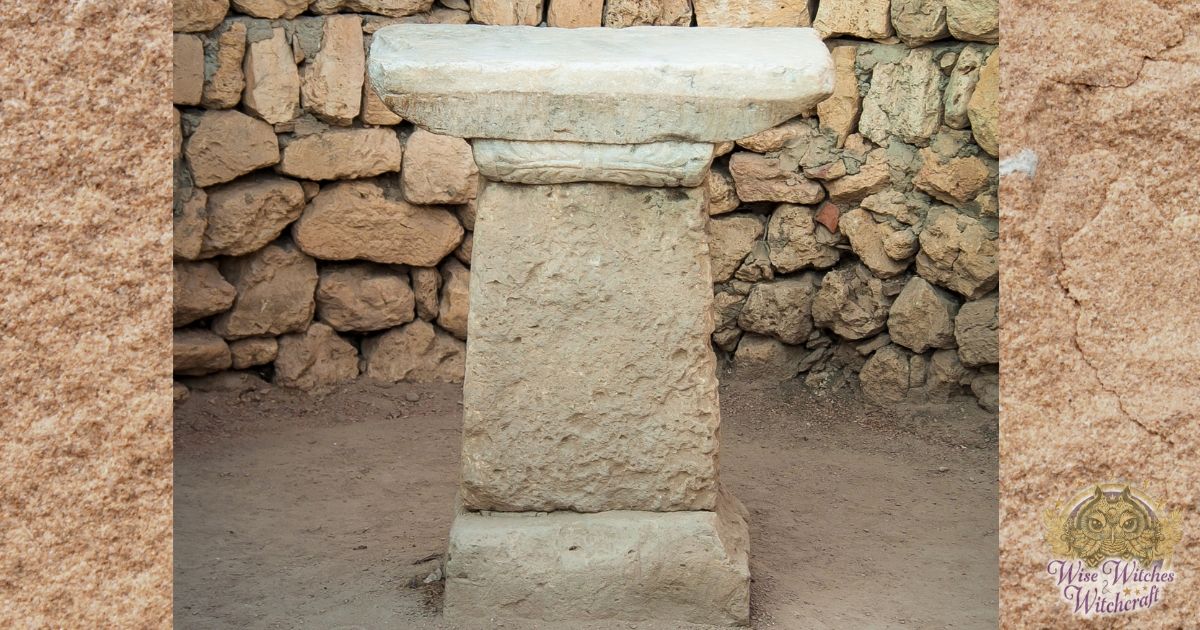Witchcraft Terms and Tools – Altar

A Wiccan altar is typically a piece of furniture, such as a table or chest, upon which a practitioner of Wicca places several symbolic and functional items for the purpose of worshipping the God and Goddess, casting spells, saying chants and prayers, etc. Upon the altar typically rests a cloth, used to protect the surface from damage by candle wax, spilled liquid or dust from burnt incense, and this cloth is often adorned by a pentacle and other symbols.
It can consist of any table or chest of appropriate size (usually a cube of about a metre). It can be round or square, wood or stone, solid or hollow: the important thing is that it is used solely as an altar and not for any other purpose. It should be covered with a clean cloth, usually plain, but sometimes decorated with appropriate symbols, and usually in a colour appropriate to the particular ritual being performed. The altar is positioned in the middle of the ritual circle, usually facing north, although it can be repositioned for different rituals (e.g. East for Spring, South for Summer, West for Autumn, North for Winter, etc).

The altar is often considered a personal place where practitioners may put their religious and ritual items, such as the athame, chalice, pentacle, incense, candles, cauldron, broom, wand, etc. Some of these items represent the earth’s four elements, Fire, Water, Earth and Air (for example, candles and wand for Fire, incense and athame for Air, chalice for Water, pentacle for Earth), but elements may also be represented more literally, such as with gems, salt, water, plant material, insect casings, etc). The items can be laid out on the altar in a variety of ways, for example based on their relation to the God (masculine) and the Goddess (feminine), or on the points of the compass and their associated elements, etc. However, there is plenty of scope for individuality and originality.




